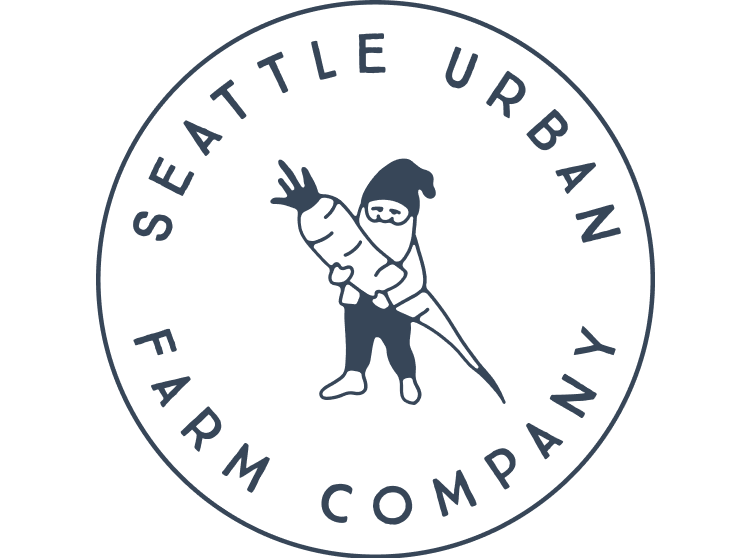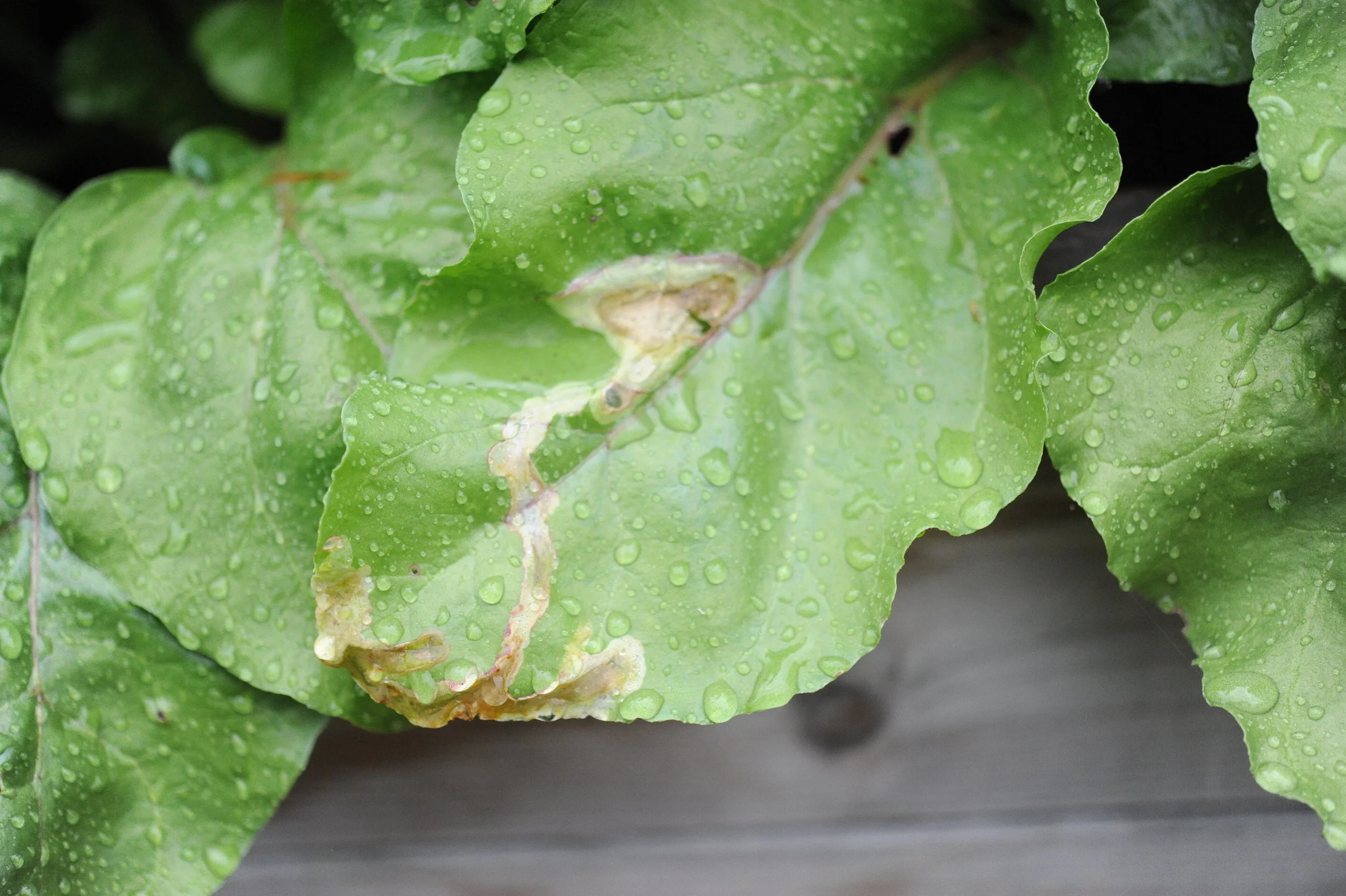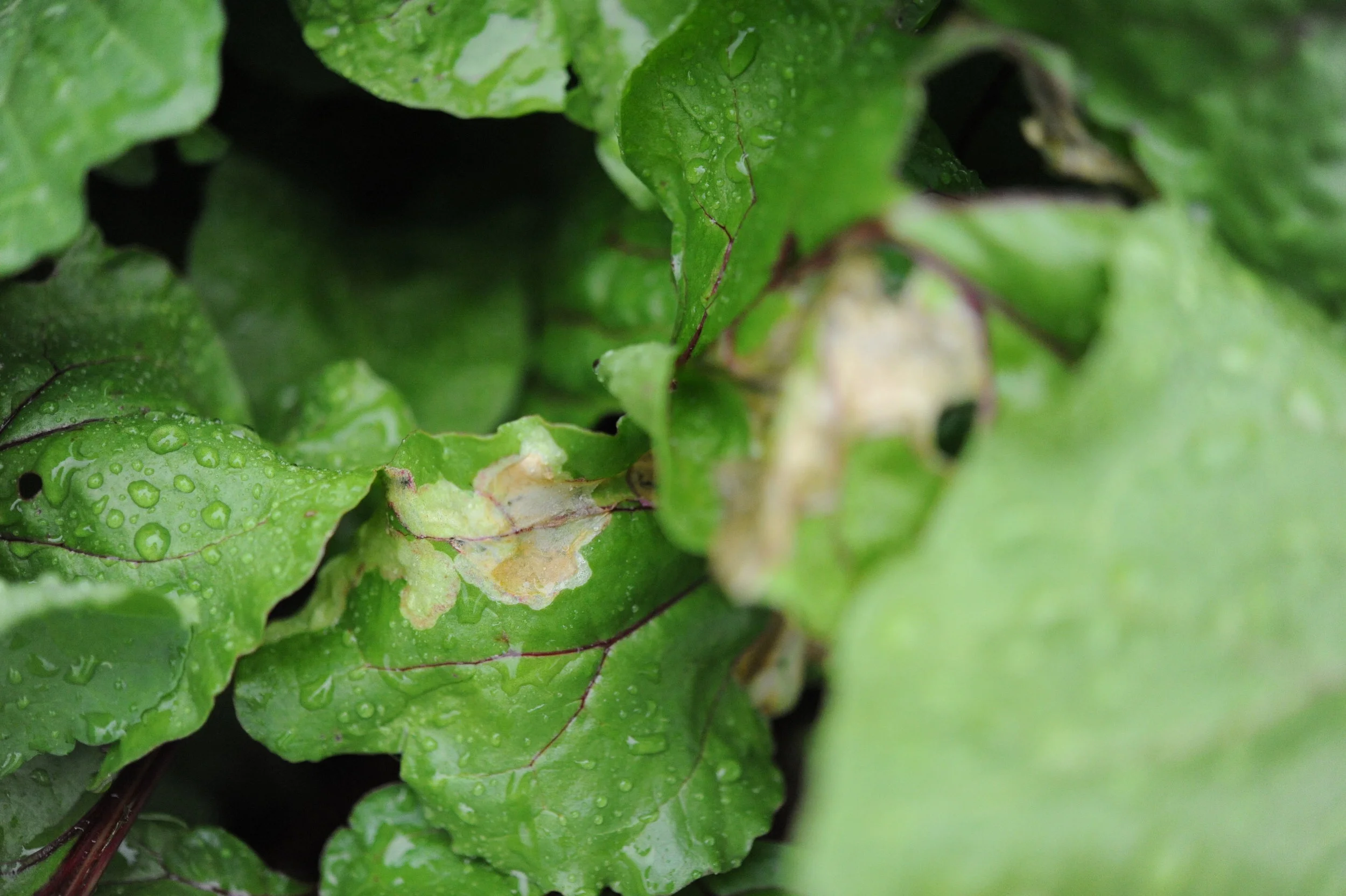This week we’ll be talking about leaf miners. In my experience, I have found that leaf miners are more of an issue in the late spring and early summer, but many people have been asking about them in response to photos I have been posting of my beet greens on our various social media accounts so I wanted to go ahead and talk about them now in the late summer, because realistically, they can be a problem just about any time during the season.
Leaf miner damage can be misleading because on first inspection, it looks more like damage from a disease than damage from a pest. To add to the confusion, there are two types of leaf miners that you might find in your annual garden: Vegetable leaf miners and spinach leaf miner. Vegetable leaf miners create serpentine mines which wind snake-like across the leaves gradually widening, whereas spinach leaf miners are a type of blotch leaf miner, creating irregularly-rounded shaped mines. There are actually lots of other types of insects known as leaf miners that affect a wide range of plant species including shrubs and trees, but for our purposes, we’ll focus on those that show up on our annual vegetables.
The Spinach Leaf miner feeds on:
spinach
Swiss chard
tomato
cucumber
celery
The Vegetable Leaf miner feeds on:
beans
eggplant
pepper
potato
squash
tomato
watermelon
cucumber
beet
pea
lettuce
many other plants
Some basic things to know about leaf miners:
Leaf miners are actually insect larva and the adults of both species are small flies.
As the larvae feed and develop, they create “mines” of dead tissue where they have fed. These mines are opaque initially and then later turn brown.
They are able to move from leaf to leaf when plants are touching, enabling them to damage an entire row of plants.
The tunnels are small to begin with, but enlarge when the developing white maggots devour the material between the top and bottom layers of the leaves.
They overwinter in the soil as pupae and hatch in mid-spring. The fly then begins the life cycle again by laying eggs on the leaves of the target plants. There can be three to four generations of leafminers per year, but the greatest activity is in mid to late May, late June and mid-August.
The damage does not usually kill a plant, but they do render many greens inedible.
Managing Leaf miners in your organic garden:
The parasitic wasp Diglyphus isaea is a commercially available beneficial insect that will kill leaf miner larva in the mine. However, to establish a population of beneficial insects typically requires multiple releases and the establishment of suitable habitat for all life cycles of the beneficial. Therefore, the release of wasps is more of a long term investment, definitely not a quick fix type of solution.
Remove the infected leaves. In order for this form of control to be successful, you must be diligent. As we mentioned before, the miners can move between touching leaves and sometime they have already moved on to a leaf before you start to notice any signs of them. So if you’re employing this method of pest control, be sure to remove leaves as soon as you notice any small signs of damage. The more often you are able to visit the garden to check for damage, the more successful this technique will be.
Organic neem oil. The oil is supposed to break the pests’ life-cycle by preventing larva from reaching maturity. Neem oil may also have repellent qualities and interfere with egg laying activities. I can’t say for certain that this method is successful, but it is a relatively easy and inexpensive option and Neem oil is a great organic spray to have on hand for an array of possible pest and disease issues.
Preventing Leaf miners:
Floating row cover. Floating row cover creates a physical barrier between the pest and the crop. We actually discussed floating row covers, or reemay, in last week’s episode as a tool for season extension.
Floating row cover (often know by the brand name Reemay) is a lightweight spun-bonded polyester. The weight of row cover materials vary, so when choosing a row cover for pest-prevention, you might consider a lighter weight than you would for season extension so as not to overheat the crops. Some suppliers actually offer row covers made of a very fine mesh that is specifically designed for pest control. These fine mesh covers offer even more air circulation that the polyester type.
If you already have leaf miner issues, don't trap the pests right in the bed with your crops! If you’re planning to use floating row cover, install it over a brand new planting in an area of your garden that has not previously been affected by leaf miners. The best technique would be to place the row cover over your new crop as soon as they have been seeded or transplanted into the garden.
There are many ways to use a row cover. The most common practice is to drape it over a series of hoops that span the top of your garden bed. These hoops can be made of bent plastic like PVC (see photo above) or electrical conduit or can be made from metal (Johnny’s selected seeds actually sells really nice thin metal rods specifically for this purpose).
Another technique that requires even less infrastructure is to simply lay the fabric directly on top of the crops. This method is great in that it does not require any additional materials besides the fabric and something to hold it in place. Many crops can grow by simply pushing up on the fabric as they mature. It should be noted that this technique can deform stems and leaves of crops and in certain weather can lead to fungal issues since air flow can be restricted when it is used in this way.






